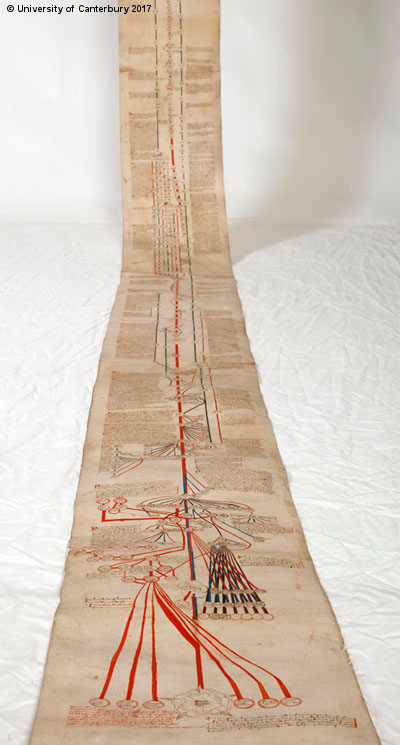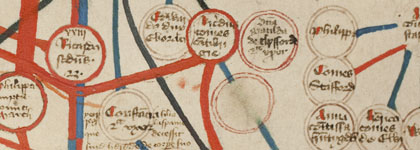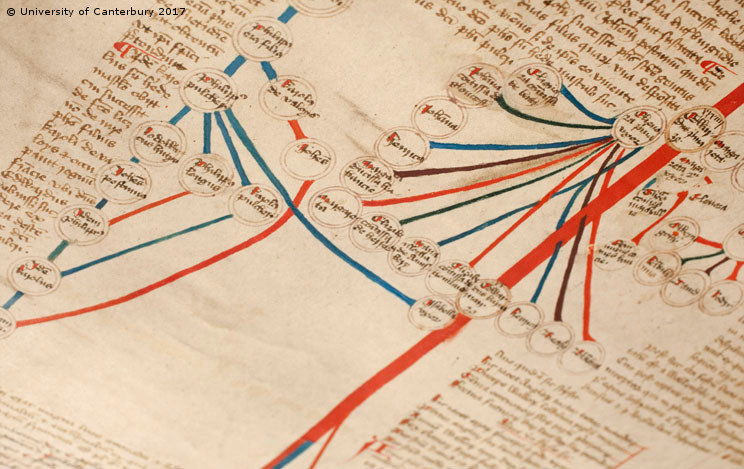As is explored in the section focusing on its origin, the Canterbury Roll easily lends itself to propaganda. This section explores the idea of the Roll as propaganda in greater depth.
Genealogies as Propaganda
At first glance, the propaganda value of genealogical rolls would appear to be limited. Unless heavily illustrated, rolls require a literate audience and are unwieldy objects, difficult to present to a large crowd.
Other means, such as proclamations, were more effective at spreading information among the urban populace in the Middle Ages. Proclamations reached a wide audience easily, and were by far the most obvious point of contact between a king and his subjects.
On the other hand, it seems to be a reasonable conclusion that genealogical rolls contributed to attempts, particularly by the Yorkists, to promote claims to legitimacy in the latter half of the 15th century.
Chronicles, regarded as authentic and authoritative sources, were consulted in political life in England. Chronicles and genealogical rolls (which act almost as "digest" version of chronicles with diagrams) were a subtler form of propaganda than proclamations, but could be powerful weapons.
For example, in 1457 John Hardyng presented a chronicle to Henry VI. After the Yorkists claimed the throne, Hardyng rewrote his chronicle and presented an "updated" version to Edward IV in 1464. Although the two versions were similar, the latter emphasized the Yorkists, much as the revised Canterbury Roll does.
Perhaps widespread circulation was not the point of rolls like the Canterbury Roll. They were authoritative documents, like chronicles, used to explain "history" as imagined by the rich and powerful for political purposes.

The second half of the Canterbury Roll. The length of the manuscript makes it impractical for large audiences to view from a distance.
English Claims to the Kingdom of France
Although the Canterbury Roll appears to focus only on the British Isles, the English claim to the Kingdom of France is yet another aspect of propaganda included on the manuscript.
Please click on the image below for a brief exploration of this French connection.
MSH
Postal address:
University of Canterbury
Private Bag 4800
Christchurch 8140
New Zealand
Enquiries
General Editor
Dr Chris Jones
chris.jones@canterbury.ac.nz
Phone +64 3 369 4307
Text copyright © 2017 the authors as named. Images copyright the institutions and individuals as credited.
ISBN 978-1-98-850307-3
Credits & Permissions
Phone +64 3 369 4307



